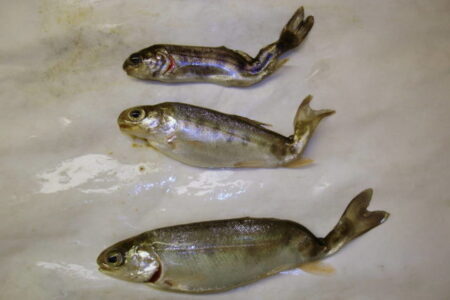Dealing with spring sensitivities
This is the time of year where we are exposed to increased dust and moulds as the snow melts away.
Some of you may experience symptoms of increased sneezing, nasal or sinus congestion, usually worse in the morning, irritated eyes, increased post-nasal drip and subsequent sore or irritated throat or some combination of these.
Here are some of the treatments that will help your sensitivities.
A. Mould allergies
Many people are allergic to mould. Moulds are microscopic living organisms that live throughout the house and outside.
The spots most common are under the sink, in the bathroom, basement, refrigerator and any dark damp place. They also live in the air, soil, on dead leaves and on snow.
They may be destructive, but they are also beneficial. They help to make cheese, fertilize gardens and speed decaying of garbage and fallen leaves. Penicillin is made from moulds.
Spores are carried by the wind and are most prevalent in the summer and early fall and spring. Cutting grass, harvesting crops or walking through tall vegetation may provoke a reaction. Those who repair old used furniture are also at risk. Keep rooms ventilated and use a dehumidifier if needed.
B. Nutritional supplements
- Vitamin C acts as a natural anti-histamine. It helps to strengthen the immune system, so it doesn’t over-react to the irritant and ca, therefore, minimize the body’s reaction.
- Quercetin, a bioflavonoid, works well with vitamin C as an anti-histamine and may reduce the severity of hay fever symptoms or other allergic symptoms. Together, they can be taken at the beginning of hay fever season to help hay fever sufferers through the season or with onset of symptoms. Other bioflavonoids that can be tried are hesperidin and rutin.
- EFA’s such as flax oil and fish oils will reduce the inflammatory response of the immune system.
C. Herbs that may be helpful
- Nettle leaf may reduce the symptoms of hay fever, including sneezing and itchy eyes.
- Dried nettles can be bought at a health food store and can be added to stir- fries, soups or to any herbal tea.
- Essential oils of german chamomille (5 drops) and fir (5 drops) in 1 oz of olive oil topically reduces symptoms.
D. Physical treatments
Alternating hot and cold with a sinus wash is extremely helpful in clearing the sinuses.
Ionized air may also play a role in allergies. Research suggests that some allergy-provoking substances, such as dust and pollen, have a positive electrical charge.
Negative ions appear to counteract the allergenic effects of these positively charged ions on respiratory tissues. Negative ions minimize symptoms and many individuals experience relief from their respiratory allergies. Other allergy sufferers report considerable relief.
Avoid your known allergenic foods, such as cow dairy, since it produces mucous.
For airborne allergens use a proper air filter, especially in the bedroom and consider an electrostatic furnace cleaner.
For moulds use bleach 1:5 dilution or Citricidal dilution to clean bathroom windows, tiles etc. monthly and keep the house temperature at 68 degrees for 8 hours a day
For dust use a dust cover on the mattress/pillow and remove rugs if possible. Vacuum or damp mop regularly (two times/week). Remove any books, stuffed animals or trinkets on dressers in the bedroom and wash stuffed animals weekly.
For a more in-depth evaluation of allergies, environmental or food allergy testing call for an appointment with Dr. Brenda Gill at 250-352-3150 or 362-5035.


























